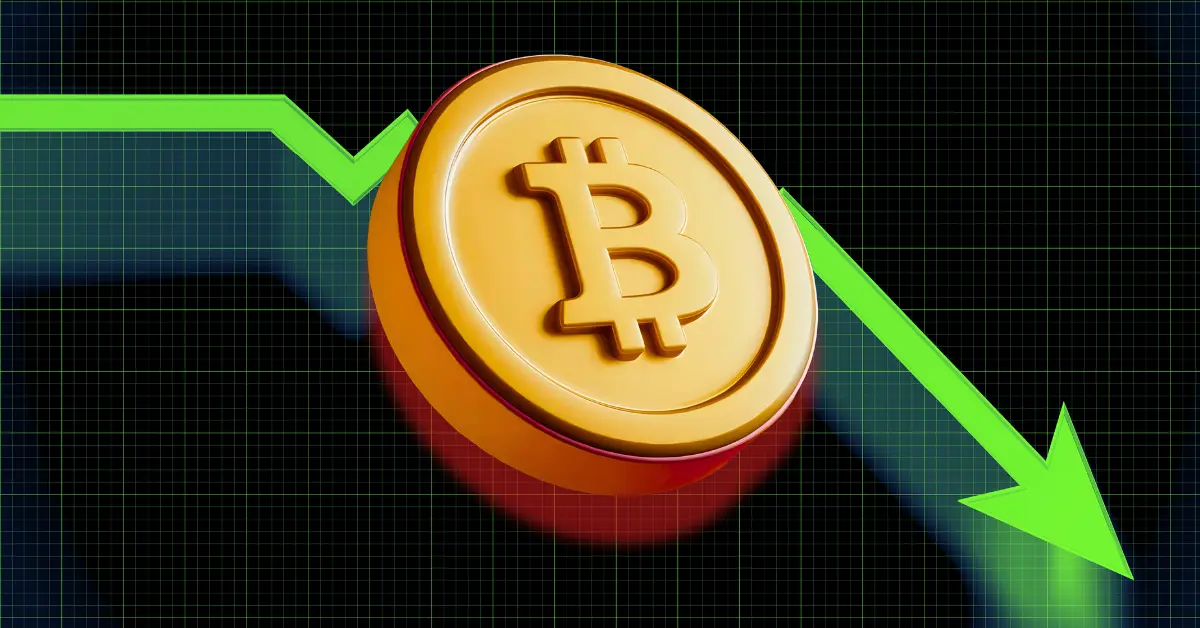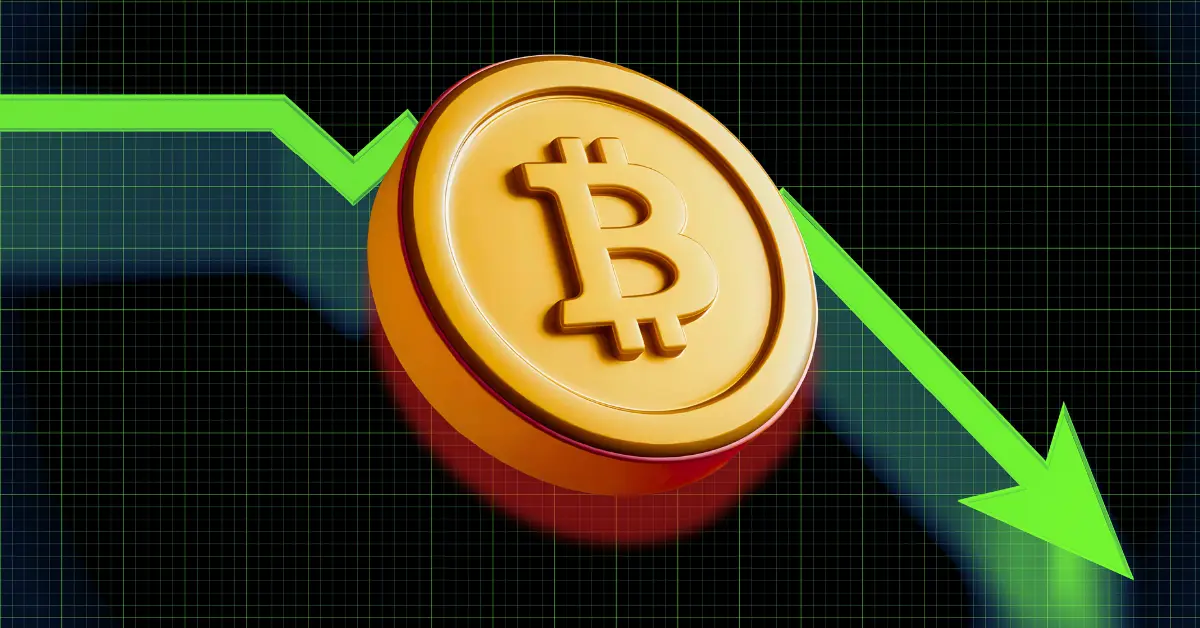Bitcoin’s Tightrope Walk: Balancing Bullish Hopes and Bearish Realities
Bitcoin, the pioneering cryptocurrency, currently finds itself navigating a precarious path. Its price action resembles a tense standoff, a tug-of-war played out in real-time between optimistic buyers and increasingly wary sellers. While Bitcoin has repeatedly showcased its capacity for recovery, bouncing back from dips with surprising agility, it’s undeniable that breaching and, more importantly, sustaining gains above the coveted $100,000 threshold has proven an arduous task. A growing chorus of voices within the market suggests that a descent below this psychological landmark is not just a possibility, but a potentially imminent scenario. This analysis seeks to dissect the factors contributing to this vulnerable position, carefully examining the market dynamics, deciphering the signals emanating from technical indicators, and accounting for the influence of external forces that are collectively shaping Bitcoin’s near-term destiny.
The $100,000 Standoff: More Than Just a Number
The $100,000 price level has transcended its initial status as a mere symbolic milestone, transforming into a critical battleground where bulls and bears clash. It now represents a key resistance point, a ceiling that Bitcoin has repeatedly bumped against but failed to shatter decisively. Reports consistently highlight the cryptocurrency’s struggle to maintain altitude above this benchmark, often retreating after brief incursions near $103,000. This price behavior strongly suggests the emergence of significant selling pressure as the price ventures towards this area, effectively erecting a barrier that prevents sustained upward momentum. These sellers are often those looking to take profit at a psychologically important level.
Intriguingly, some analysts are beginning to suggest that a slip *below* $100,000 is becoming “less likely,” spurred by increasing liquidity clustered above $106,000. This hints at a potential shift in the underlying market dynamics, where traders are anticipating a rebound and strategically positioning themselves to capitalize on it. The psychology here is one of “buying the dip,” anticipating price appreciation after a short-term correction. However, this optimistic undercurrent does not entirely negate the prevailing downward pressure and the multitude of factors that contribute to the persistent risk of a price decline.
Forces Unleashed: Driving Bitcoin’s Potential Descent
A confluence of forces is currently exerting downward pressure on Bitcoin’s price, creating a challenging environment for bullish investors. The initial catalyst for the recent weakness was a broad market sell-off which some analysts attributed to worries over valuations in the artificial intelligence (AI) market. This widespread selling triggered a wave of liquidations—a staggering $698 million wiped out, according to some—further amplifying the downward spiral. This is because liquidations force traders to sell their assets at market price, accelerating the price declines.
Beyond the turbulence in the AI market, geopolitical instability, specifically the escalating tensions between Iran and Israel, has injected a fresh dose of risk aversion into the broader market. During times of geopolitical uncertainty, investors often seek refuge in safer haven assets, reducing their exposure to riskier investments such as Bitcoin. Comments from global leaders, particularly former US President Donald Trump, have further stoked uncertainty and market volatility. The impact of such statements on market sentiment can be significant.
Decoding the Charts: Bearish Signals Emerge
Technical analysis, a method of forecasting price movements based on historical patterns, paints a concerning picture for Bitcoin. The appearance of a “death cross”—a bearish indicator that occurs when a shorter-term moving average dips below a longer-term moving average—is stoking fears of a more pronounced sell-off. This particular indicator is interpreted as a potential sign of a shift in the long-term momentum of the market, suggesting a move from bullish to bearish sentiment.
Adding to the gloomy outlook is the formation of a descending triangle pattern on Bitcoin’s price chart, as highlighted in several reports. This pattern typically signals a continuation of the existing downtrend. Analysts also point to a “bearish divergence,” confirming a weakening of the bullish momentum that had previously propelled Bitcoin’s price upward. In short, technical analysis suggests further price declines are likely.
Walls of Resistance: Supply Overhang and Investor Sentiment
A significant obstacle hindering Bitcoin’s upward progress is the presence of what’s described as a “stiff supply wall” between $98,000 and $100,000. This implies a large concentration of investors who acquired Bitcoin at these price levels, effectively erecting a formidable resistance barrier. These investors are likely to seize opportunities to sell their Bitcoin holdings and realize profits, adding to the selling pressure and preventing any decisive price breakthrough.
Market sentiment also plays a pivotal role in shaping price movements. Reports indicate “extreme greed” prevailing in the market, a condition that often precedes a correction. The idea here is that when everyone is bullish, there are fewer buyers left to push the price higher. Some analysts are forecasting a potential dip of up to 15%, potentially dragging the price below $80,000 before any sustained upward movement can occur.
Diverging Views: Bull Trap or Buying Opportunity?
Despite the predominantly bearish sentiment swirling around Bitcoin, not all analysts are convinced of an impending crash. Some maintain a long-term bullish outlook, even predicting a potential rally to $250,000 following a market correction. However, a growing concern is the potential for a “bull trap”—a deceptive signal that suggests a reversal of the downtrend, only to be followed by a renewed wave of declines. Escalating tensions in the Middle East and specific chart patterns are cited as potential catalysts for such a deceiving scenario. In a bull trap, traders who jump in expecting a rally are caught off-guard and suffer losses when the price reverses again.
The internal debate within the Bitcoin community itself is palpable. One Reddit user questioned whether the price would ever reach $100,000, underlining the risk of those being left behind, waiting for a dip that never materializes. This captures the inherent tension in the market: waiting for a better entry point versus missing out on potential gains.
Short-Term Outlook: Volatility and Potential Targets
The immediate future for Bitcoin appears highly volatile. Traders are actively targeting lower price zones, with $87,000 being highlighted as a potential support level. Analysts are closely monitoring key support and resistance levels, anticipating a potential correction before prominent economic data releases. The recent price drop of over 8% in just four days underscores the heightened sensitivity of the market to both positive and negative news. This means that even seemingly minor events can trigger significant price swings.
Navigating the Labyrinth: A Call for Cautious Optimism
The current landscape for Bitcoin is complex, filled with uncertainties. While the long-term potential remains a compelling narrative, the short-to-medium term is likely to be characterized by volatility and potential downside risk. The confluence of market sell-offs, geopolitical tensions, bearish technical indicators, and strong supply walls creates a challenging environment for bullish investors.
The consistent struggle to break and hold above $100,000 suggests that this level is more than just a psychological barrier; it represents a genuine technical challenge. Although a rebound is possible, especially if liquidity continues to build above $106,000, investors should proceed with caution and remain prepared for the possibility of a further correction. The shadow of a potential bull trap looms large, and a prudent approach involves diligently monitoring market developments and adjusting trading strategies accordingly. The coming weeks will prove crucial in determining whether Bitcoin can successfully overcome these headwinds and resume its upward trajectory or succumb to the mounting pressures and fall below the pivotal $100,000 mark.












